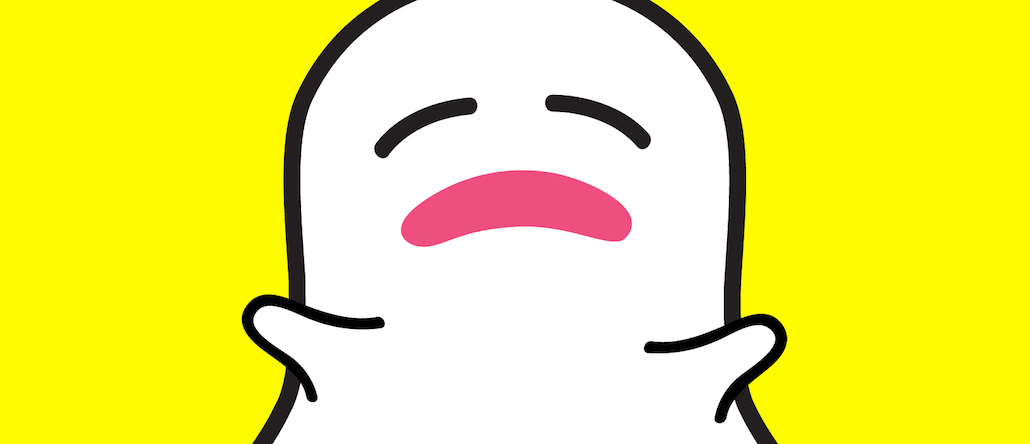Save 50% on a 3-month Digiday+ membership. Ends Dec 5.
More than 60 percent of Snapchat users skip ads on the platform

Snapchat has been promoting its ad products and encouraging marketers to pay to play. But the ad-supported revenue model doesn’t seem to work well for the platform as it is supposed to be, at least for now.
New stats from customer acquisition firm Fluent show that 69 percent of the 3,327 American adults surveyed online skip ads on Snapchat “always” or “often,” and that number goes up to 80 percent among 18- to 24-year-olds, a target group that many marketers want to reach. Although Fluent doesn’t have ad abandonment rate for other social networks like Facebook, Instagram and Twitter, its CMO Jordan Cohen thinks that 69 percent is a “big number for ad-supported companies.”
And most Snapchat users don’t consume news content on the platform. The survey reveals that 61 percent don’t follow any news organizations on Discover, while 50 percent don’t follow sports like ESPN and 57 percent don’t follow entertainment brands like E! and Daily Mail.
The reason boils down to what users are actually using Snapchat for, said Cohen. “I asked lots of millennials this question. It’s really about exclusive short, fun content,” he explained. “In addition to communicating with friends, they follow celebrities. They don’t really engage with ads or mainstream news outlets.”
Snapchat’s parent company Snap Inc. said in its first SEC filing that it generates revenue primarily through advertising. Currently, it offers three ad units: lenses, geofilters and Snap ads that are vertical full-screen videos. As a media buyer, David Song, managing director for agency Barker, thinks that earned is much better than paid on Snapchat, although his clients occasionally purchase geofilters.
“Honestly, I don’t think advertising works on Snapchat. If I see an ad from Taco Bell, I will skip it immediately,” said Song. “Snapchat is lovely for the end user, but it doesn’t know how to sell its ad products. Previously, it had a set rate instead of impression-based buys, and now, it is switching to a CPM-based model. In comparison, clients are very familiar with how to buy ads on Instagram Stories because it is part of Facebook Audience Network.”
Snapchat reportedly offers various ad packages around major events. For the Super Bowl package, the minimum ad spend was $225,000. It’s unclear what ad units marketers can get from those packages. Ivonne Kinser, director of digital marketing for Avocados from Mexico tested Snap ads for the first time through a partnership with Tastemade during this year’s Super Bowl, where the brand placed a 10-second video on the publisher’s Discover channel. This Snap ad saw a swipe up rate of 9.8 percent, compared to Tastemade’s benchmark of 7.5 percent, as well as a view duration of three minutes and 22 seconds versus the publisher’s benchmark of 2.5 seconds, said Kinser.
The media buy is based on a cost-per-view model. Without the Tastemade partnership, Avocados from Mexico would not have been able to afford Snapchat ads, Kinser noted. “For us, Snap ads are cost-prohibited,” she said. “I take pride on our approach. Many in the industry may think that we have pockets as deep as the largest consumer packaged goods brands. But the truth is that right now, our budgets are too small to afford Snap ads within a traditional media buy.”
From a creative perspective, Liam Copeland, director of decision science for Movement Strategy, argues that Snapchat ads carry value for fashion and entertainment brands. The trick is to film videos on iPhones using the front facing camera with the talent front and center — and with no branding until three to five seconds in, according to Copeland.
“The more organic the ad feels and the later the branding appears, the more likely a user is to swipe up to view long-form content or web content,” he said.
When it comes to targeting and measurement, Fluent’s Cohen believes that Snapchat’s major challenge is lack of ownership of marketing data, although the platform recently formed a partnership with Oracle to measure impact of ads on sales in stores.
“Facebook and Twitter also use third-party data, but those partnerships are complimentary to their proprietary datasets,” he said. “I don’t think Snapchat provides much proprietary data at the moment.”
A Snapchat representative said that the company is currently offering 10 targeting capabilities, including email, interest-based targeting and device ID matching.
More in Marketing

U.K. retailer Boots leads brand efforts to invest in ad creative’s data layer
For media dollars to make an impact, brands need ad creative that actually hits. More CMOs are investing in pre- and post-flight measurement.

‘AI is permeating everything we do’: How Guitar Center developed 2 AI tools this year
This summer, the company launched a chatbot called Rig Advisor to help customers find the right instruments and products.

Behind the rise of the chief productivity officer and what it means for companies and employees
The CPO is envisioned as the leader who orchestrates people and technology together to drive business outcomes.







